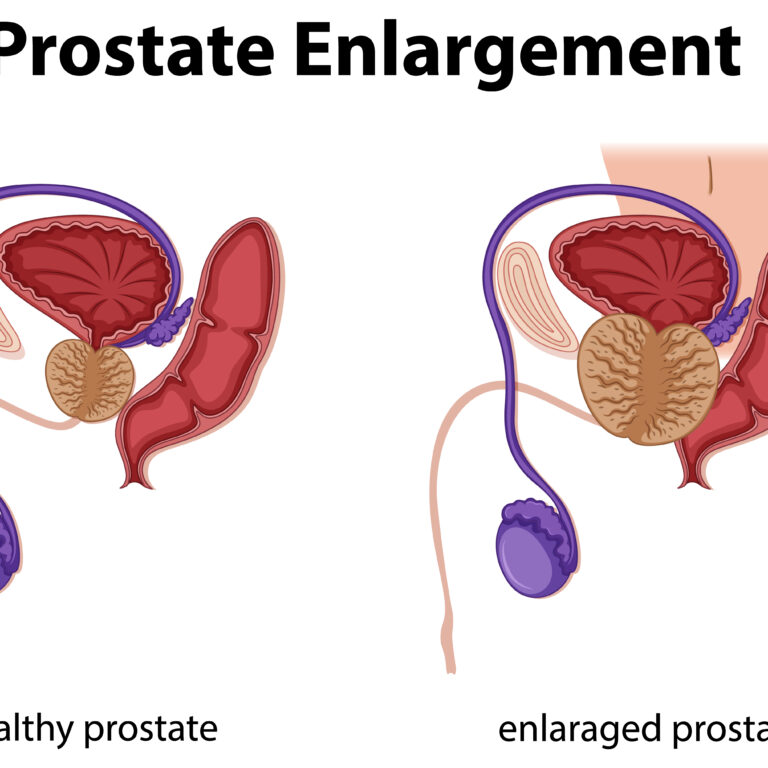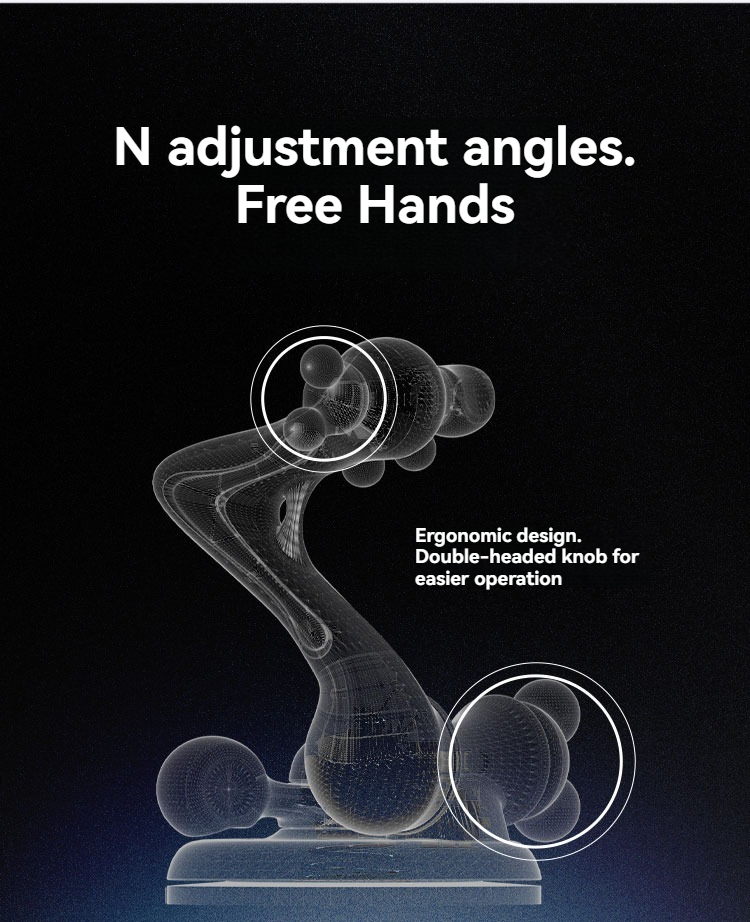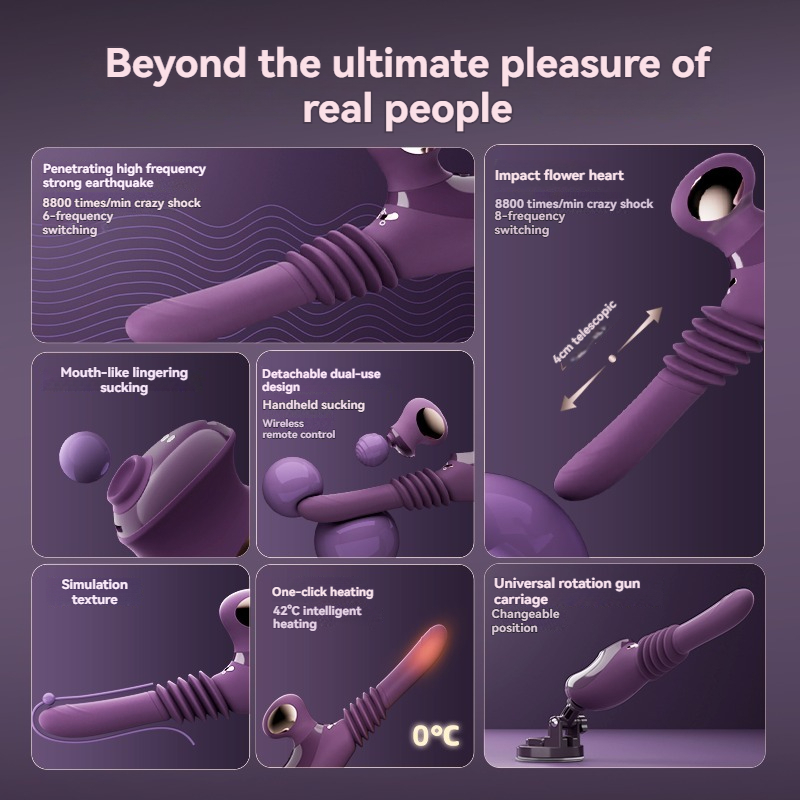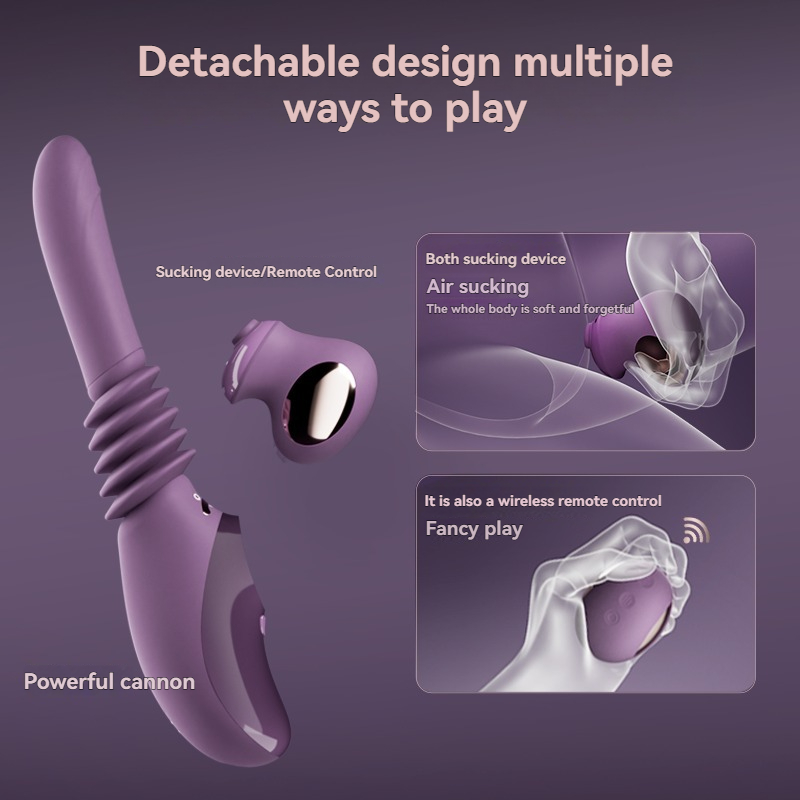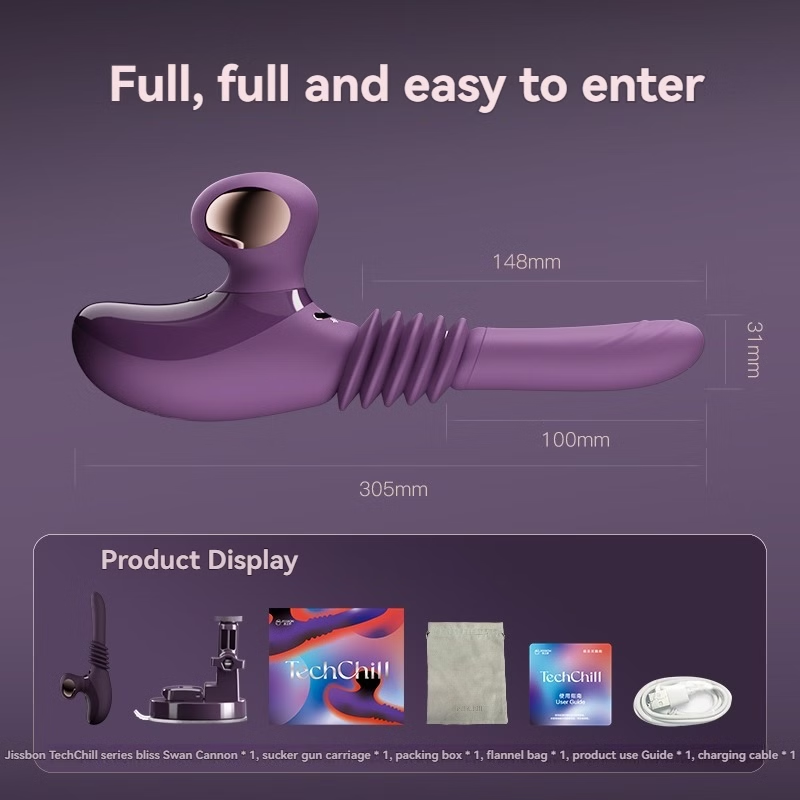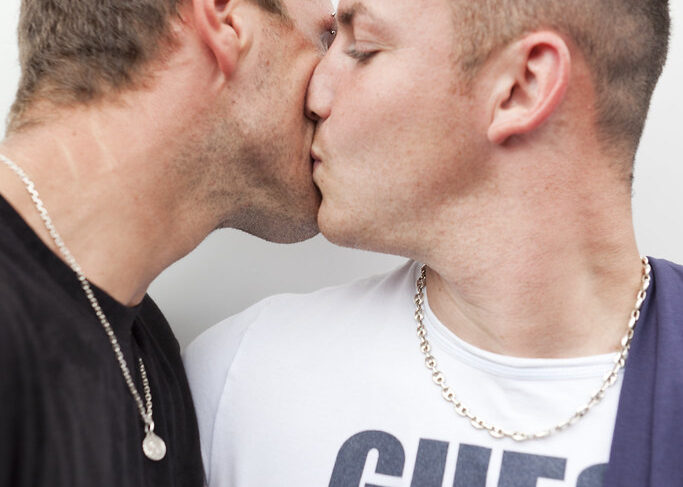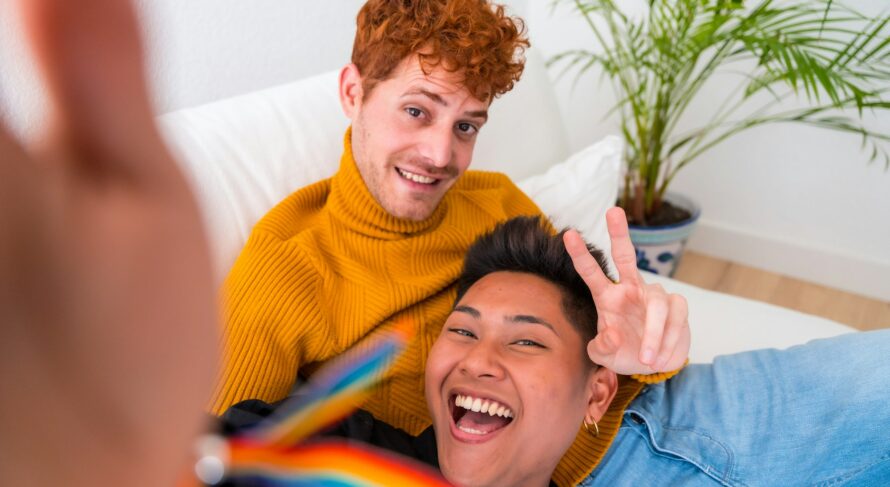Communication Strategies for Enhancing Intimacy Among Gay Men

Key Takeaways-Communication Strategies for Enhancing Intimacy Among Gay Men
- Effective communication is essential for building and maintaining intimacy in gay men’s relationships.
- Gay men face unique communication barriers, including societal stigma and internalized homophobia.
- Strategies such as active listening, empathy, and honest dialogue can significantly enhance intimacy.
- Conflict resolution and emotional intelligence play crucial roles in fostering healthy relationships.
- Utilizing technology and creating safe spaces are modern approaches to improving communication.
- Continuous learning and adaptability are key to sustaining long-term intimate connections.
Table of Contents
- Introduction
- The Importance of Communication in Relationships
- Specific Challenges Faced by Gay Men
- Effective Communication Strategies
- Conflict Resolution in Gay Relationships
- Building Emotional Intimacy
- Utilizing Technology in Communication
- Practical Tips for Enhancing Communication
- Theoretical Frameworks Supporting Communication Strategies
- Case Study: Effective Communication in a Gay Relationship
- Visual Table: Comparison of Communication Strategies
- Conclusion
- Frequently Asked Questions
- References
Introduction
Intimacy is a cornerstone of any meaningful relationship, encompassing emotional closeness, physical connection, and psychological bonding. For gay men, the journey towards achieving and maintaining intimacy is uniquely influenced by societal attitudes, cultural norms, and personal experiences. Effective communication is paramount in building and sustaining these intimate bonds, yet gay men often face distinct challenges that can hinder open and honest dialogue. This comprehensive guide delves into the communication strategies that can enhance intimacy among gay men, providing insights, practical tips, and academically backed methods to foster healthier and more fulfilling relationships.
Whether you are in a new relationship or seeking to deepen an existing one, understanding and implementing effective communication strategies can significantly impact the quality of your intimate connections. This article is designed to equip gay men with the knowledge and tools necessary to navigate the complexities of communication within their relationships, ensuring that both partners feel heard, respected, and emotionally connected.
The Importance of Communication in Relationships
Communication serves as the foundation of all relationships, acting as the medium through which individuals express their thoughts, feelings, and needs. In the context of intimate relationships, effective communication is essential for several reasons:
- Emotional Connection: Sharing emotions and vulnerabilities fosters a deeper emotional bond between partners, enhancing mutual understanding and empathy.
- Conflict Resolution: Open dialogue allows couples to address and resolve disagreements constructively, preventing resentment and misunderstandings.
- Trust Building: Consistent and honest communication builds trust, a critical component of a healthy and lasting relationship.
- Personal Growth: Through communication, individuals can express their personal growth and aspirations, aligning their goals with those of their partner.
For gay men, the importance of communication is amplified by the need to navigate unique societal pressures and internalized challenges. Effective communication not only enhances intimacy but also serves as a tool for overcoming barriers and fostering resilience within the relationship.
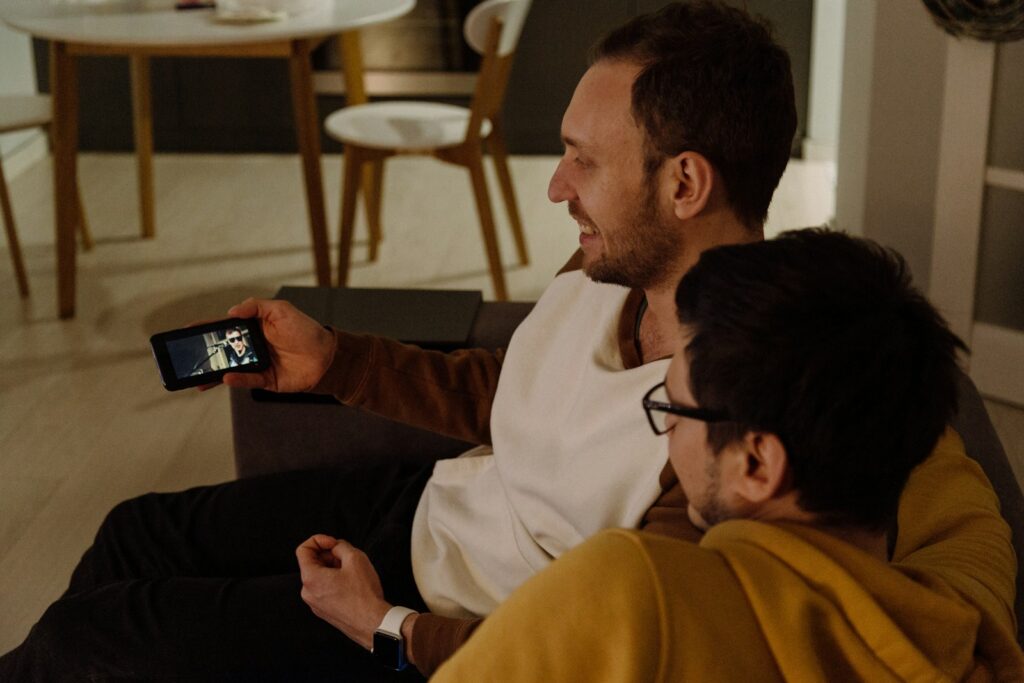
Specific Challenges Faced by Gay Men
Gay men often encounter distinct challenges in their relationships that can complicate communication and intimacy. Understanding these challenges is crucial for developing effective strategies to address them:
Societal Stigma and Discrimination
Despite progress in LGBTQ+ rights, gay men may still face societal stigma and discrimination. This external pressure can create stress and anxiety, making it difficult to communicate openly within the relationship. The fear of judgment or rejection can lead to guardedness and reluctance to share true feelings.
Internalized Homophobia
Internalized homophobia refers to the internalization of societal negative attitudes towards homosexuality. This can result in self-doubt, shame, and a reluctance to express one’s true identity and desires. Such internal conflicts can hinder open and honest communication, as individuals may struggle to articulate their needs and emotions.
Cultural and Familial Expectations
Cultural and familial expectations can exert significant influence on gay men, especially those from conservative backgrounds. Balancing personal desires with familial obligations can create tension and complicate communication within the relationship. The need to navigate these expectations requires sensitive and empathetic dialogue between partners.
Unique Relationship Dynamics
The dynamics of gay relationships can differ from heterosexual relationships, particularly in areas such as societal recognition, legal protections, and community support. These differences necessitate tailored communication strategies to address specific needs and challenges unique to gay men.
Addressing these challenges requires a multifaceted approach that encompasses self-awareness, empathy, and the implementation of effective communication techniques. By recognizing and understanding these barriers, gay men can develop strategies to enhance intimacy and foster healthier relationships.
Effective Communication Strategies
Implementing effective communication strategies is essential for enhancing intimacy among gay men. These strategies help create an environment of openness, trust, and mutual respect, enabling partners to connect on a deeper level.
Active Listening
Active listening involves fully concentrating on what the other person is saying, understanding their message, and responding thoughtfully. This technique ensures that both partners feel heard and valued, fostering a deeper emotional connection.
- Tips for Active Listening:
- Maintain eye contact and use positive body language.
- Avoid interrupting or formulating a response while the other person is speaking.
- Reflect back what you’ve heard to confirm understanding.
- Ask clarifying questions if something is unclear.
Active listening is particularly important in gay relationships where partners may need to navigate additional layers of understanding due to societal pressures and internalized emotions. By practicing active listening, couples can create a safe space for sharing and emotional expression.
Empathy
Empathy involves putting oneself in the other person’s shoes and understanding their feelings and perspectives. It is a critical component of emotional intimacy, as it allows partners to connect on a deeper emotional level.
- Developing Empathy:
- Practice mindfulness to become more aware of your own and your partner’s emotions.
- Respond with compassion and support rather than judgment.
- Validate your partner’s feelings, even if you don’t fully understand them.
In the context of gay relationships, empathy can help partners navigate the unique challenges they face, such as dealing with external stigma or internalized fears. By fostering empathy, couples can build a more supportive and understanding relationship, enhancing their overall intimacy.
Open and Honest Dialogue
Open and honest dialogue is the cornerstone of any healthy relationship. It involves sharing thoughts, feelings, and concerns transparently and respectfully. For gay men, fostering open communication can help address and overcome unique challenges, strengthening the bond between partners.
- Encouraging Honesty:
- Create a non-judgmental environment where both partners feel safe to express themselves.
- Share your thoughts and feelings regularly to prevent misunderstandings and build trust.
- Be truthful about your needs and desires, even when the conversation is difficult.
Honest dialogue helps in addressing issues before they escalate, ensuring that both partners remain aligned in their relationship goals and expectations. It also fosters a sense of security and mutual respect, which are essential for deepening intimacy.
Non-Verbal Communication
Non-verbal communication includes body language, facial expressions, gestures, and other forms of silent interaction that convey emotions and intentions. It plays a significant role in enhancing intimacy by adding depth and nuance to verbal communication.
- Improving Non-Verbal Cues:
- Be mindful of your body language; open and relaxed postures can encourage openness.
- Use touch appropriately to convey affection and support.
- Maintain eye contact to show attentiveness and sincerity.
In gay relationships, where verbal communication may sometimes be influenced by societal pressures, non-verbal cues can provide additional layers of understanding and connection. Being attuned to these cues can enhance the overall communication dynamic, making interactions more meaningful and intimate.
Assertiveness
Assertiveness is the ability to express one’s needs, desires, and boundaries clearly and respectfully without infringing on the rights of others. It is a vital communication skill that contributes to balanced and healthy relationships.
- Developing Assertiveness:
- Practice expressing your thoughts and feelings calmly and clearly.
- Use “I” statements to take ownership of your emotions (e.g., “I feel…” instead of “You make me feel…”).
- Set and maintain healthy boundaries to ensure mutual respect and understanding.
Assertiveness empowers gay men to advocate for their needs within the relationship, fostering an environment of mutual respect and equality. This balanced communication approach helps prevent power imbalances and ensures that both partners feel valued and heard.
Active Conflict Resolution
Conflict is inevitable in any relationship, but how couples handle disagreements can significantly impact the level of intimacy. Active conflict resolution involves addressing disputes constructively, focusing on solutions rather than blame.
- Effective Conflict Resolution Techniques:
- Address conflicts promptly to prevent escalation.
- Focus on the issue at hand rather than bringing up past grievances.
- Work collaboratively to find mutually acceptable solutions.
- Take breaks if emotions run high, and revisit the conversation when both partners are calmer.
In gay relationships, where partners may face external pressures and unique challenges, effective conflict resolution is essential for maintaining harmony and deepening intimacy. By approaching conflicts with a problem-solving mindset, couples can strengthen their bond and enhance their overall relationship quality.

Conflict Resolution in Gay Relationships
Conflict resolution is a critical component of maintaining healthy and intimate relationships. In the context of gay relationships, where couples may face additional societal pressures and unique challenges, effective conflict resolution strategies are essential for fostering harmony and enhancing intimacy.
Identifying Common Sources of Conflict
Understanding the common sources of conflict can help couples anticipate and address issues proactively. In gay relationships, common conflict triggers may include:
- External Stressors: Discrimination, societal stigma, and lack of acceptance can create external pressures that strain the relationship.
- Internalized Homophobia: Struggles with self-acceptance and internalized negative beliefs about homosexuality can lead to personal conflicts.
- Communication Breakdown: Misunderstandings and lack of effective communication can escalate minor disagreements into significant conflicts.
- Different Relationship Expectations: Variations in expectations regarding commitment, roles, and future goals can lead to disagreements.
By identifying these common sources, couples can develop strategies to mitigate their impact and maintain a healthy, intimate relationship.
Strategies for Resolving Disputes Constructively
Constructive conflict resolution involves addressing disagreements in a manner that promotes understanding and mutual respect. Effective strategies include:
- Stay Calm and Composed: Maintaining emotional control helps prevent escalation and allows for rational discussion.
- Use “I” Statements: Expressing feelings and needs without blaming the partner fosters a non-confrontational dialogue (Rosenberg, 2015).
- Listen Actively: Ensure that both partners have the opportunity to express their perspectives fully before seeking solutions.
- Seek Common Ground: Identify shared goals and interests that can serve as a foundation for resolving the conflict.
- Agree to Disagree: Recognize that not all disagreements can be fully resolved, and find ways to coexist respectfully.
Implementing these strategies can help gay men navigate conflicts effectively, reducing tension and enhancing the overall quality of the relationship.
Mediation and Counseling
In cases where conflicts become particularly challenging to resolve independently, seeking external support through mediation or counseling can be beneficial. Professional counselors or mediators can provide unbiased perspectives and facilitate constructive dialogue, helping couples overcome barriers to effective communication.
- Benefits of Counseling:
- Provides a safe and structured environment for discussing sensitive issues.
- Offers tools and techniques for improving communication and resolving conflicts.
- Helps identify and address underlying issues that contribute to recurring conflicts.
Counseling can be particularly valuable for gay men who may face unique challenges related to societal acceptance and internalized stigma. By addressing these issues with professional guidance, couples can strengthen their communication skills and enhance their intimate connection.
Building Emotional Intimacy
Emotional intimacy is the foundation of a deep and meaningful relationship. It involves the ability to share personal thoughts, feelings, and vulnerabilities with a partner, fostering a strong emotional bond. For gay men, building emotional intimacy can be influenced by unique challenges such as societal stigma and internalized homophobia, making effective communication strategies even more critical.
Sharing Vulnerabilities
Sharing vulnerabilities involves opening up about personal fears, insecurities, and past experiences. This level of openness creates a safe space for both partners to express themselves honestly, fostering trust and emotional closeness.
- Encouraging Vulnerability:
- Be patient and understanding, allowing your partner to share at their own pace.
- Respond with empathy and support when your partner shares vulnerable aspects of themselves.
- Model vulnerability by sharing your own feelings and experiences openly.
By consistently sharing vulnerabilities, gay men can create a deep emotional connection that enhances intimacy and strengthens the relationship.
Establishing Trust and Mutual Respect
Trust and mutual respect are essential components of emotional intimacy. Building trust involves being reliable, honest, and consistent in your actions and words. Mutual respect means valuing each other’s opinions, boundaries, and individuality.
- Building Trust:
- Keep promises and commitments to show reliability.
- Be honest and transparent in all communications.
- Avoid behaviors that can undermine trust, such as lying or withholding information.
- Fostering Mutual Respect:
- Respect each other’s differences and unique perspectives.
- Acknowledge and validate each other’s feelings and experiences.
- Support each other’s personal growth and aspirations.
Trust and mutual respect lay the groundwork for a stable and emotionally intimate relationship, allowing gay men to connect on a deeper level and navigate challenges with confidence.
Creating a Supportive Environment
A supportive environment encourages open communication and emotional expression. This involves creating spaces where both partners feel safe to share their thoughts and feelings without fear of judgment or rejection.
- Building a Safe Space:
- Establish ground rules for respectful and open communication.
- Encourage active participation from both partners in discussions.
- Provide emotional support and understanding during difficult conversations.
A supportive environment enhances emotional intimacy by fostering a sense of security and belonging, allowing both partners to fully express themselves and connect on a meaningful level.
Regular Emotional Check-ins
Regular emotional check-ins involve setting aside time to discuss the state of the relationship, address any concerns, and celebrate successes. These check-ins help maintain open lines of communication and ensure that both partners are aligned in their relationship goals and expectations.
- Implementing Emotional Check-ins:
- Schedule regular times for open and honest discussions.
- Use these sessions to share feelings, discuss challenges, and set future goals.
- Encourage each other to speak freely and listen actively.
By incorporating regular emotional check-ins, gay men can proactively address issues, reinforce their emotional bond, and ensure ongoing intimacy and satisfaction in the relationship.
Utilizing Technology in Communication
In the digital age, technology plays a significant role in shaping how gay men communicate and build intimacy in their relationships. From social media to messaging apps, technology offers numerous tools that can enhance communication and support intimate connections.
Digital Communication Tools
Digital communication tools such as messaging apps, video calls, and social media platforms facilitate constant and convenient communication between partners. These tools are particularly beneficial for maintaining connections in long-distance relationships or busy schedules.
- Advantages of Digital Communication:
- Provides immediate and convenient ways to stay connected.
- Allows for asynchronous communication, accommodating different schedules.
- Enables sharing of multimedia content, such as photos and videos, to enhance emotional closeness.
By leveraging digital communication tools, gay men can enhance their intimate connections, ensuring that they remain emotionally connected even when physically apart.
Online Support Communities
Online support communities and forums offer gay men a platform to share experiences, seek advice, and find emotional support. These communities can be invaluable for building intimacy by providing a sense of belonging and understanding.
- Benefits of Online Communities:
- Provide a safe space for discussing personal and relationship challenges.
- Offer resources and support from individuals who share similar experiences.
- Facilitate connections with others who can offer advice and encouragement.
Engaging with online support communities can help gay men navigate the complexities of their relationships, offering insights and perspectives that enhance communication and intimacy.
Technology-Assisted Counseling
Technology has also transformed access to counseling and therapy services. Online counseling platforms allow gay men to seek professional help from the comfort of their homes, making therapy more accessible and convenient.
- Advantages of Online Counseling:
- Provides privacy and anonymity, reducing barriers to seeking help.
- Offers flexible scheduling and access to a wider range of professionals.
- Facilitates continuous support and follow-up sessions.
Utilizing technology-assisted counseling can support gay men in developing effective communication strategies and addressing relationship challenges, thereby enhancing intimacy and relationship satisfaction.
Digital Tools for Relationship Building
Various digital tools and applications are designed specifically to support relationship building and communication. These tools can help couples track their interactions, set relationship goals, and engage in activities that promote intimacy.
- Examples of Digital Tools:
- Couples apps that facilitate shared calendars, goal setting, and communication exercises.
- Online games and activities designed to enhance teamwork and mutual understanding.
- Digital journals and shared platforms for documenting and reflecting on relationship milestones.
Integrating these digital tools into the relationship can provide structured and interactive ways to enhance communication and build intimacy, making the relationship more dynamic and engaging.
Balancing Digital and Face-to-Face Communication
While digital communication tools offer numerous benefits, it is essential to balance them with face-to-face interactions to maintain a deep and meaningful connection. Overreliance on digital communication can lead to superficial interactions, while face-to-face communication fosters a richer emotional bond.
- Strategies for Balance:
- Set aside dedicated time for in-person conversations and activities.
- Use digital tools to complement, not replace, face-to-face communication.
- Prioritize quality over quantity in digital interactions.
By maintaining a balanced approach to communication, gay men can leverage the benefits of technology while ensuring that their intimate connections remain deep and meaningful.

Practical Tips for Enhancing Communication
Implementing practical communication strategies can significantly enhance intimacy in gay men’s relationships. These tips provide actionable steps to improve communication and foster a deeper emotional connection.
Establish Regular Communication Rituals
Establishing regular communication rituals helps maintain consistent and meaningful interactions. Whether it’s a daily check-in, a weekly date night, or a monthly relationship review, these rituals provide structured opportunities for partners to connect and share.
- Examples of Communication Rituals:
- Daily morning or evening check-ins to discuss plans and feelings.
- Weekly date nights to engage in shared activities and conversations.
- Monthly relationship reviews to assess the health and direction of the relationship.
Regular communication rituals create a sense of stability and predictability, allowing partners to prioritize their relationship and address issues proactively.
Practice Mindful Communication
Mindful communication involves being fully present and engaged during conversations. It requires active listening, non-judgmental responses, and a focus on understanding rather than reacting.
- Steps to Practice Mindful Communication:
- Minimize distractions by turning off electronic devices during conversations.
- Focus on the speaker, maintaining eye contact and attentive body language.
- Avoid interrupting and allow your partner to express themselves fully before responding.
- Reflect on what you’ve heard and provide thoughtful feedback.
Mindful communication fosters a deeper understanding and appreciation between partners, enhancing emotional intimacy and reducing the likelihood of misunderstandings.
Express Appreciation and Gratitude
Regularly expressing appreciation and gratitude strengthens the emotional bond by affirming each partner’s value and contributions to the relationship. Acknowledging each other’s efforts and qualities fosters a positive and supportive relationship environment.
- Ways to Express Appreciation:
- Verbal affirmations such as saying “thank you” or “I appreciate you.”
- Written notes or messages expressing gratitude for specific actions or qualities.
- Acts of kindness and thoughtful gestures that demonstrate appreciation.
By consistently expressing appreciation, gay men can cultivate a culture of positivity and mutual respect within their relationships, enhancing overall intimacy and satisfaction.
Develop Shared Goals and Interests
Developing shared goals and interests creates a sense of partnership and unity. Collaborating on common objectives and engaging in activities that both partners enjoy fosters teamwork and strengthens the emotional connection.
- Examples of Shared Goals:
- Planning future milestones such as moving in together or getting married.
- Setting financial goals, like saving for a vacation or a home.
- Engaging in shared hobbies and interests, such as cooking, traveling, or fitness activities.
Shared goals and interests provide opportunities for positive interactions and collaborative experiences, reinforcing the bond between partners and enhancing intimacy.
Seek Continuous Learning and Adaptation
Relationships are dynamic and evolving, requiring continuous learning and adaptation. Staying informed about effective communication techniques and being willing to adapt to changing circumstances helps maintain a healthy and intimate relationship.
- Ways to Foster Continuous Learning:
- Attend workshops or seminars on relationship communication.
- Read books and articles on effective communication and intimacy.
- Engage in couples counseling or relationship coaching to develop new skills.
By committing to continuous learning, gay men can enhance their communication skills, address emerging challenges, and maintain a strong and intimate connection with their partners.
Theoretical Frameworks Supporting Communication Strategies
Understanding the theoretical underpinnings of effective communication can provide deeper insights into why certain strategies work and how they can be applied in gay relationships. Several theories offer valuable perspectives on communication and intimacy:
Attachment Theory
Attachment theory, developed by John Bowlby, explores how early relationships with caregivers influence an individual’s ability to form and maintain intimate relationships in adulthood. The theory identifies different attachment styles—secure, anxious, and avoidant—that affect communication patterns and intimacy levels in relationships (Bowlby, 1982).
In gay relationships, understanding each partner’s attachment style can help tailor communication strategies to foster a more secure and supportive bond. For example, partners with anxious attachment may benefit from reassurance and consistent communication, while those with avoidant attachment may need space and understanding to open up emotionally.
Social Exchange Theory
Social exchange theory posits that relationships are maintained based on the perceived costs and benefits of the partnership (Thibaut & Kelley, 1959). Effective communication can enhance the benefits and reduce the costs, thereby strengthening the relationship.
In gay relationships, social exchange theory can help partners evaluate and improve their communication by identifying areas where communication can be more rewarding or less burdensome. By enhancing positive exchanges and minimizing negative interactions, couples can foster greater intimacy and satisfaction.
Equity Theory
Equity theory emphasizes the importance of fairness and balance in relationships. It suggests that individuals are most satisfied in relationships where the input and output are perceived as equitable (Adams, 1965).
In the context of gay relationships, equity theory highlights the need for balanced communication efforts from both partners. Ensuring that both individuals feel equally invested and valued in the relationship promotes fairness and enhances emotional intimacy.
Communication Privacy Management Theory
Communication Privacy Management (CPM) theory focuses on how individuals manage their private information within relationships. It examines how people decide what to disclose, how to share information, and how to protect their privacy (Petronio, 2002).
For gay men, CPM theory provides a framework for understanding the complexities of sharing personal information and vulnerabilities. By establishing clear boundaries and mutual agreements on information sharing, partners can navigate privacy concerns and foster deeper intimacy.
These theoretical frameworks offer valuable insights into the dynamics of communication and intimacy, providing a solid foundation for implementing effective communication strategies in gay relationships.
Case Study: Effective Communication in a Gay Relationship
To illustrate the practical application of communication strategies in enhancing intimacy among gay men, let’s examine a case study involving Alex and Ben, a couple who navigated communication challenges to build a strong and intimate relationship.
Background
Alex and Ben had been in a relationship for two years. Despite their strong emotional connection, they often found themselves struggling with misunderstandings and unaddressed conflicts. External pressures, including societal stigma and family disapproval, added to their communication challenges.
Identifying Communication Barriers
Through self-reflection and discussions, Alex and Ben identified several communication barriers:
- Fear of Judgment: Both partners were hesitant to express their true feelings due to fear of judgment and rejection.
- Assumptions and Misunderstandings: They often made assumptions about each other’s intentions, leading to unnecessary conflicts.
- Lack of Active Listening: One partner felt that the other was not fully attentive during conversations, leading to feelings of being unheard.
Implementing Communication Strategies
To overcome these barriers, Alex and Ben implemented several communication strategies:
Active Listening and Empathy
They committed to practicing active listening by maintaining eye contact, minimizing distractions, and reflecting back what they heard to ensure understanding. This approach helped them feel more connected and validated in their conversations.
Establishing Open and Honest Dialogue
Alex and Ben set aside dedicated time each week for open and honest discussions about their feelings, concerns, and aspirations. This ritual created a safe space for sharing and prevented minor issues from escalating into major conflicts.
Conflict Resolution Techniques
When conflicts arose, they used “I” statements to express their feelings without blaming each other. They focused on finding mutually acceptable solutions and agreed to take breaks if emotions ran high, ensuring that conflicts were addressed constructively.
Utilizing Technology
They leveraged digital communication tools such as shared calendars and relationship apps to stay organized and aligned on their goals. These tools facilitated ongoing communication and collaboration, enhancing their sense of partnership.
Building Emotional Intimacy
By regularly sharing vulnerabilities and supporting each other’s emotional needs, Alex and Ben deepened their emotional connection. They practiced expressing appreciation and gratitude, reinforcing their mutual respect and affection.
Outcome
Over time, the implementation of these communication strategies led to significant improvements in Alex and Ben’s relationship. They experienced fewer misunderstandings, enhanced emotional intimacy, and a stronger sense of trust and partnership. By prioritizing effective communication, they were able to navigate external pressures and build a resilient and fulfilling relationship.
This case study exemplifies how deliberate and strategic communication efforts can transform a relationship, fostering deeper intimacy and mutual satisfaction.
Visual Table: Comparison of Communication Strategies
| Communication Strategy | Description | Benefits |
|---|---|---|
| Active Listening | Fully concentrating on what is being said rather than just passively hearing the message of the speaker. | Enhances understanding, builds trust, and reduces misunderstandings. |
| Empathy | Understanding and sharing the feelings of another. | Fosters emotional connection, promotes mutual respect, and strengthens bonds. |
| Open and Honest Dialogue | Sharing thoughts, feelings, and concerns transparently and respectfully. | Builds trust, prevents conflicts, and ensures both partners feel heard. |
| Non-Verbal Communication | Using body language, facial expressions, and gestures to convey messages. | Enhances emotional connection, adds depth to verbal communication. |
| Assertiveness | Expressing one’s needs and boundaries clearly and respectfully. | Promotes mutual respect, prevents resentment, and ensures balanced relationships. |
| Conflict Resolution | Addressing and resolving disagreements constructively. | Reduces tension, fosters understanding, and strengthens the relationship. |
| Utilizing Technology | Using digital tools to enhance communication and connection. | Facilitates consistent communication, supports long-distance relationships, and provides resources. |

Conclusion
Effective communication is the lifeblood of intimate relationships, enabling gay men to build and maintain deep emotional connections despite facing unique challenges. By understanding the importance of communication, recognizing the specific barriers they may encounter, and implementing targeted strategies, gay men can enhance intimacy and foster healthier, more fulfilling relationships.
The strategies discussed—ranging from active listening and empathy to utilizing technology and conflict resolution—provide a comprehensive framework for improving communication within gay relationships. These methods not only address immediate communication needs but also lay the groundwork for long-term emotional intimacy and trust.
Additionally, understanding the theoretical frameworks such as attachment theory, social exchange theory, equity theory, and communication privacy management theory offers valuable insights into the dynamics of communication and intimacy. These theories highlight the underlying principles that make communication strategies effective, enabling gay men to apply these strategies more thoughtfully and effectively.
At sextoyforyou.store, we are committed to supporting gay men in their journey towards building intimate and fulfilling relationships. Our curated selection of products and resources are designed to enhance communication and intimacy, providing the tools you need to connect deeply with your partner. Whether you are seeking to improve your communication skills, resolve conflicts, or deepen your emotional bond, we are here to help you every step of the way.
Embrace these communication strategies today and transform your relationship into a source of strength, joy, and profound intimacy. Remember, the foundation of a lasting and meaningful relationship lies in how effectively you communicate and connect with your partner.
Frequently Asked Questions
1. How can active listening improve intimacy in gay relationships?
Active listening enhances intimacy by ensuring that both partners feel heard and understood. It involves fully concentrating on what the other person is saying, responding thoughtfully, and reflecting back what you’ve heard. This practice fosters a deeper emotional connection, reduces misunderstandings, and builds trust, all of which are essential for maintaining a strong and intimate relationship (Rosenberg, 2015).
2. What are some common communication barriers in gay relationships, and how can they be overcome?
Common communication barriers in gay relationships include societal stigma, internalized homophobia, and differing cultural or familial expectations. These barriers can lead to fear of judgment, reluctance to express true feelings, and misunderstandings. To overcome these barriers, couples can practice active listening, empathy, and open dialogue. Additionally, seeking support through counseling or joining LGBTQ+ communities can provide a safe space to address and navigate these challenges effectively (Herek, 2009).
3. How can technology be used to enhance communication and intimacy in gay relationships?
Technology can significantly enhance communication and intimacy in gay relationships by providing tools for constant and convenient interaction. Dating apps, messaging platforms, and video calls facilitate regular communication, especially in long-distance relationships. Additionally, online support communities and relationship apps offer resources for improving communication skills and fostering emotional connections. By leveraging these digital tools, gay men can maintain and deepen their intimate bonds, even when physical distance or busy schedules pose challenges (Roberts & David, 2020).
References
- Adams, J. S. (1965). Inequity in social exchange. In L. Berkowitz (Ed.), Advances in Experimental Social Psychology (Vol. 2, pp. 267-299). Academic Press. https://doi.org/10.1016/S0065-2601(08)60303-8
- Bowlby, J. (1982). Attachment and Loss: Vol. 1. Attachment. Basic Books. https://www.basicbooks.com/titles/john-bowlby/attachment-and-loss-vol-1/9780465095130/
- Butler, J. (1990). Gender Trouble: Feminism and the Subversion of Identity. Routledge.
- Crenshaw, K. (1989). Demarginalizing the intersection of race and sex: A black feminist critique of antidiscrimination doctrine, feminist theory and antiracist politics. University of Chicago Legal Forum, 1989(1), 139-167. https://doi.org/10.2307/797544
- D’Emilio, J., & Freedman, E. B. (2012). Intimate Matters: A History of Sexuality in America. University of Chicago Press. https://press.uchicago.edu/ucp/books/book/chicago/I/bo1960562.html
- Herek, G. M. (2009). Sexual stigma and sexual prejudice in the United States: A conceptual framework. In D. A. Hope (Ed.), Contemporary Perspectives on Lesbian, Gay, and Bisexual Identities (pp. 65-111). Springer. https://doi.org/10.1007/978-1-4419-9917-6_3
- Meyer, I. H. (2003). Prejudice, social stress, and mental health in lesbian, gay, and bisexual populations: Conceptual issues and research evidence. Psychological Bulletin, 129(5), 674-697. https://doi.org/10.1037/0033-2909.129.5.674
- Petronio, S. (2002). Communication Privacy Management: Theory and Practice. Routledge.
- Rosenberg, M. B. (2015). Nonviolent Communication: A Language of Life. PuddleDancer Press.
- Roberts, K., & David, M. E. (2020). Digital transformations: How technology shapes relationships and intimacy. Journal of Social and Personal Relationships, 37(6), 1760-1780. https://doi.org/10.1177/0265407520917042
- Thibaut, J. W., & Kelley, H. H. (1959). The Social Psychology of Groups. Wiley.
- Thibaut, J. W., & Kelley, H. H. (1959). The Social Psychology of Groups. Wiley.
- Tilly, C., & Tarrow, S. (2015). Contentious Politics. Oxford University Press.









